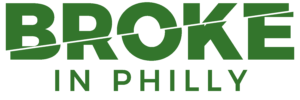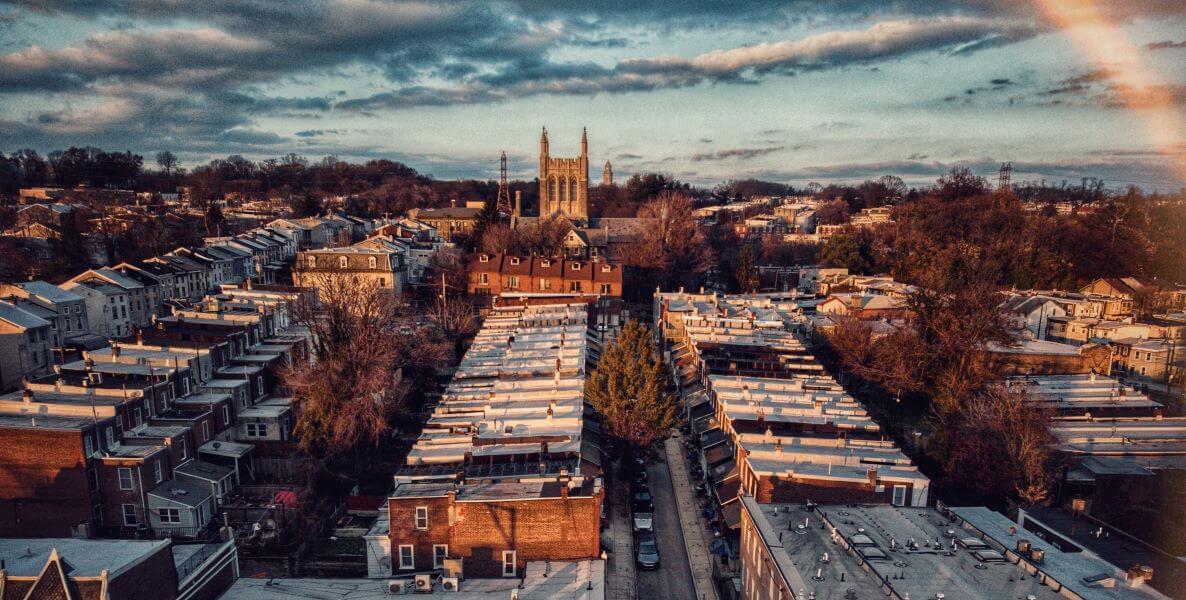Last week, Accelerator for America, the Nowak Metro Finance Lab and Mastercard’s Center for Inclusive Growth, released Averting a Lost Decade: Rethinking an Inclusive Recovery for Disadvantaged Neighborhoods.
Our intent in co-authoring this paper is to sound a loud alarm and provoke a major shift in policy, practice and capacity building. Unless major structural changes are made, at all levels of government and across all sectors of society, the nation runs the risk of a lost decade with racial wealth disparities that are greater and neighborhoods that are worse off than the period that preceded the pandemic.
Averting such outcomes will require purposeful and deliberate strategies to drive an inclusive recovery by upgrading skills, raising incomes, catalyzing revitalization and building wealth through the scaled ownership of homes and the formation of businesses. These interventions represent a marked departure from traditional neighborhood redevelopment approaches, which have tended to focus narrowly and disproportionately on the production and preservation of affordable rental housing.
Delivering an inclusive recovery is more complicated than the heightened “equity” rhetoric would have us believe.
In our view, disadvantaged neighborhoods are exceptionally vulnerable in the post-pandemic era. Kenan Fikri of Economic Innovation Group put it succinctly, saying recently, “It’s almost a hard and fast rule of modern economic growth that absent intentionality to the contrary, it will bypass the places that need it most.”
As our paper lays out, the current state of disadvantaged neighborhoods is the product of generations of structural racism, which not only cut neighborhoods off from economic opportunities but subjected them to waves of what Jane Jacobs called “cataclysmic capital,” which repeatedly extracted rather than generated wealth for local residents. Against this backdrop, low-income neighborhoods now face a series of super-sized challenges post-crisis that radically affect their current and future state and demand the strategic, coordinated deployment of public, private and philanthropic resources.
These challenges include the following:
- The pandemic hit low-income neighborhoods disproportionately hard, both with regard to health impacts (e.g., higher Covid-19 cases, hospitalizations, and deaths) as well as small business aid that missed non-White owned firms, the troubling rise in gun violence and homicides, the inadequate schooling or digital access provided to low-income students during shutdowns, and (now) inflationary pressures that are always greater for those with the least discretionary income.

- City downtowns are weaker, due to the persistence of remote work and structural changes in the spatial geography of employment. This places enormous pressures on city tax revenues, given the outsized role that central business districts and their workforce play in municipal fiscal regimes, as well as undermines support for small businesses, public transit systems and other mainstays of urban economies.
- The pandemic is ushering in a new era of digital commerce, teleservices and low-quality chain stores (e.g., Dollar Stores), undermining demand for small local retailers that have fragile finances and few ties to our mainstream banking system. Just-in-time consumerism is exacting a brutal toll on what we cherish about cities: distinctive neighborhoods that give entrepreneurs the ability to offer multiple choices in goods, services, food and amenities and build wealth for themselves and their community.
- Access to quality capital remains a persistent barrier for minority-owned businesses, given their over-concentration in low-wage, low-growth sectors and lack of access to assets that they or their family and friends readily possess. The over-focus of traditional capital providers on collateral-driven debt rather than alternative forms of lending or new forms of equity investments is an exacerbating factor. High-interest predatory capital remains a constant in lower-income neighborhoods.
- Perhaps most troubling, the pandemic has triggered a tidal wave of parasitic capital into low-income neighborhoods. Institutional and other investors are purchasing single-family homes at scale to take advantage of rising rents and the lack of adequate housing supply — often transitioning these homes from ownership to rental. This fundamentally changes the fabric of many communities and is a qualitatively different challenge than the gentrification-leads-to-displacement framing that dominates community revitalization efforts.
In the face of these structural challenges, the federal government and some of the largest private and civic institutions in the country have made unprecedented investments, commitments or policy changes. The resources made available through the $1.9 trillion American Rescue Plan and the $1.2 trillion Infrastructure Investment and Jobs Act have the potential to remake the American economy and reshape the physical landscape of communities. The equity commitments made by the Biden Administration as well as leading banks, corporations, universities and philanthropies are pathbreaking and raise the prospect for positive change in the short term and new systemic approaches for the long haul.
There will be no post-pandemic bounce-back. The impact of the past few years will take years to clarify and even more time to resolve.
Delivering an inclusive recovery, however, is more complicated than the heightened “equity” rhetoric would have us believe. Federal funding is delivered via legacy agencies and programs, which are intensely siloed and compartmentalized, making cumulative and unified investments in places heroic acts. And the capacity of many cities and metropolitan areas, let alone community intermediaries, to design, finance and deliver catalytic projects varies widely across the country, having been degraded over time.
Communities need, in short, a new path forward, both to respond to the challenges that they face as well as take advantage of the abundant funding dangled before them. To that end, our paper lays out a path towards an inclusive recovery, capturing seven kinds of interventions that cities are experimenting with that, if successful, need to be codified, adopted and adapted across the country.
Develop investment playbooks
Buffalo, New York, Dayton, Ohio, Erie, Pennsylvania and other cities are using a new tool to help them maximize access to and deployment of federal resources. Investment Playbooks identify, prioritize and cost out 15 to 20 concrete projects in defined, targeted geographies like a downtown or commercial corridor. This enables cities to match local priorities to federal resources and leverage private and civic capital. The Buffalo Investment Playbook, for example, has already garnered commitments of $300 million in public, private and civic resources, led by the Ralph C. Wilson Jr. Foundation.
Pursue game-changing investments
Birmingham, Alabama, Cleveland, Ohio, and Greensboro, North Carolina are establishing new centers of gravity in communities that have mostly lost economic relevance over multiple decades. These investments generally involve the renovation of iconic, historic properties (e.g., a former rail station, a former bank, a former industrial facility), the leveraging (or re-location) of existing anchor institutions, or the combination of separate but related infrastructure investments in a defined territory.
Expand local ownership
Akron and Cincinnati, Ohio and Philadelphia are using the purchase of land, housing and commercial properties as a means of countering the rise in parasitic capital as well as setting the stage for scaled homeownership and corridor initiatives. These efforts follow the maxim of Della Clark, president of The Enterprise Center in Philadelphia: “If you don’t have site control, you just have an opinion.” Significantly, new ideas around community equity corporations, districts and shares are emerging that, if structured and implemented well, could enable residents to benefit from economic revitalization of their communities.
Drive a surge in workforce diversity
Many cities, counties and states are pursuing sector-based efforts to upgrade skills and raise incomes through deliberate networks of private employers, unions, high schools, community colleges, universities, and private and nonprofit training partners. Real Jobs Rhode Island, for example, has been at the forefront of designing and delivering scalable workforce systems that feature employer-driven community college and credentialing pathways. Accelerator for America itself is partnering with the North America’s Building Trades Unions (NABTU) to encourage cities to use State and Local Fiscal Recovery funds to expand the capacity of NABTU’s Apprenticeship Readiness Programs, at a price tag of $150,000 per program. All these efforts need to be amped up given that expanded federal spending on infrastructure and advanced industries increases demand for skilled labor.
Drive a surge in supplier diversity
Chicago, Illinois, Kansas City, Missouri, Los Angeles, California, and San Antonio, Texas are using the procurement power of infrastructure agencies and anchor institutions to grow Black- and Latinx-owned businesses that can design, engineer, construct, maintain and finance next generation projects. This requires a fundamental shift from highly legalistic and compliance-driven systems to those that can make markets and innovate around data analytics, technology platforms, financial products and ecosystem collaboration.
Create innovative funds and products
A range of cities are innovating, sometimes with their states, to construct a continuum of capital for a continuum of entrepreneurs. New York State, for example, used the first round of State Small Business Credit Initiative funding to create a surety bond product for minority contractors. Charlotte, North Carolina and Detroit, Michigan have created special funds or intermediaries dedicated to regenerating commercial corridors within low-income neighborhoods. With leadership from the Kauffman Foundation, a growing network of CDFIs, alternative lenders and equity investors are experimenting with revenue-based financing products and other innovations.
Modernize urban institutions and networks
History teaches us that crises lead to institutional transformation. Dayton and Louisville, Kentucky, for example, have established Stimulus Command Centers to drive coordination and cumulative impact across fragmented federal programs. Tulsa, Oklahoma is going further, merging existing public authorities into one powerful entity that can use publicly held assets both to drive transformative redevelopment in the near term and generate revenues for long-term reinvestment in disadvantaged neighborhoods.
The storm is not over
Our message to city leaders — mayors, corporate CEOs, business chamber heads, foundation and university presidents, community organizers and beyond — is clear. The storm is not over. There will be no post-pandemic bounce-back. The impact of the past few years will take years to clarify and even more time to resolve.
Cities have the right mix of market relevance, civic agency and network power to navigate this uncertain period. They will need all those assets and attributes to address the challenges that will undoubtedly face the poorest of their neighborhoods.
Simply repeating what has been done in the past or believing that the federal government is the deus ex machina will not be sufficient to address what is coming. To that end, we have identified seven moves — Investment Playbooks, game-changing investments, ownership, supplier diversity, workforce diversity, finance and institutions — that we believe are aligned with the moment. They are, by no means, the full sum of what is happening in the United States or needs to happen. But they are a powerful snapshot of the different kinds of strategies that could make up a radically different approach to city building and neighborhood revitalization in the post-pandemic environment.
We welcome all comments and criticisms on Averting a Lost Decade and building strategies and responses that can drive a truly inclusive recovery.
Bruce Katz is the founding direcxtor of the Nowak Metro Finance Lab at Drexel University. Mary Ellen Wiederwohl is the president & CEO of Accelerator for America.
![]() RELATED STORIES FROM THE CITIZEN ON POST-COVID RECOVERY
RELATED STORIES FROM THE CITIZEN ON POST-COVID RECOVERY
The Virus and the City: The State of American Competitiveness
The Virus and the City: The Key To Inclusive Business Recovery
Overhead of Ridge Ave, Philadelphia. Photo by Edan Cohen on Unsplash.




